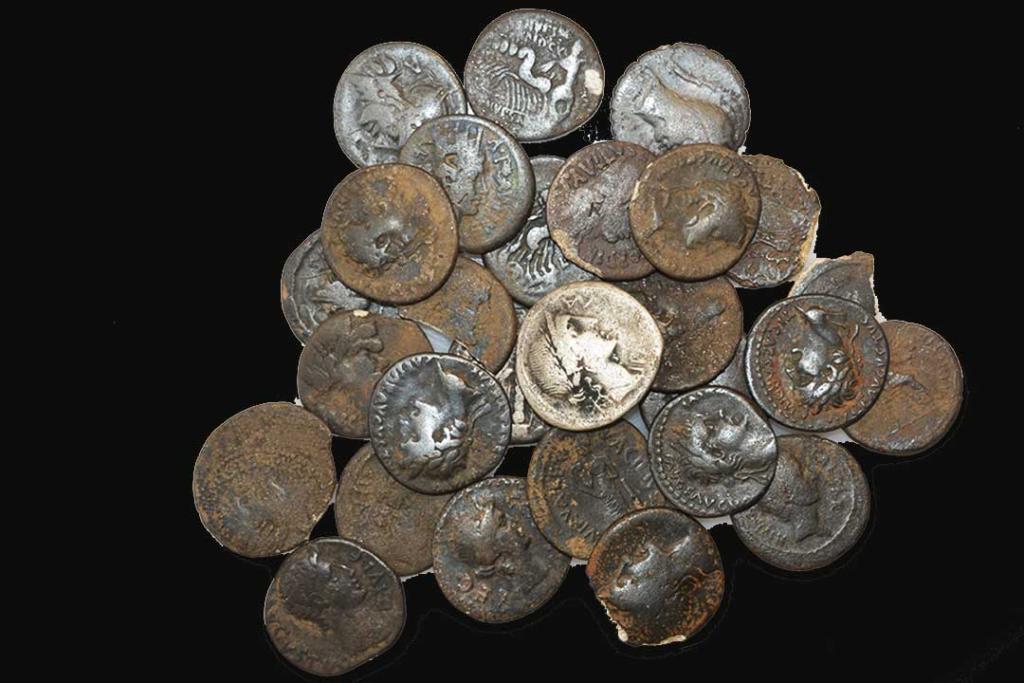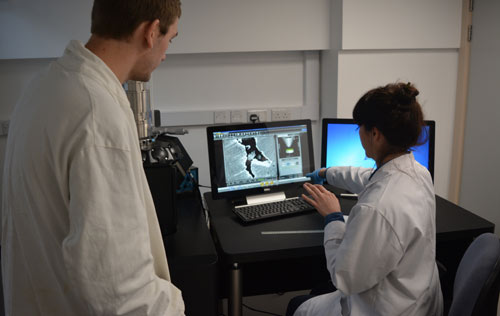
The Malpas Hoard
The Malpas Hoard is a group of 35 Iron Age and Roman coins which were struck between 134BCE and around AD50. It was discovered during a metal detecting rally near the parish of Malpas on 9 January 2014 and reported to archaeologists through the Portable Antiquities Scheme.
This hoard is part of the Cheshire Hoards collection.
Burial of the hoard
While we don't know exactly who buried the hoard, they must have been fairly wealthy individuals. The coins would have been buried for safekeeping, as it was a time of political instability and uncertainty. The mixture of English eastern and western Iron Age coins, with Roman coins, gives us an insight into the huge changes taking place in Britain at this time.
Sam Moorhead, national specialist in Roman and Iron Age coins, explores the potential story behind the hoard in this video.
The Roman coins
The Roman coins in the Malpas Hoard are early examples, struck before the conquest of Britain, and of the type that would have been in circulation when Roman soldiers arrived in Britain in AD43. The latest coin, a denarius of Tiberius (AD14-37) isn't very worn, which suggests that the hoard would have been buried within about ten years of the Roman invasion.
The Iron Age coins
There are seven Iron Age British coins in the Malpas Hoard, called staters, all made between AD20 and AD50. They are among more than 40,000 Iron Age coins which have been found in Britain.
There are two types of staters in the hoard which are rarely found together. Three of the coins are marked 'EISV', probably after an individual named Eisu or whose name was shortened to Eisu. These coins usually relate to the Dobunni tribe from the west of England in Gloucestershire. The other four coins are marked ‘VEP CORF’, which is again probably all or part of a personal name. These coins come from Corieltauvi Tribe who are associated with places like Lincolnshire and Leicestershire in the east of England.
Acquisition and conservation
The Malpas and Knutsford Hoards have been acquired in partnership between the Museum of Liverpool and Congleton Museum to be preserved and displayed to the public of the North West. This has been made possible through a generous grant from the Heritage Lottery Fund.
Following their return to the North West the hoards have undergone conservation work, specialist identification and analysis, and have been prepared for display.
Scientific analysis
The Iron Age Stater coins underwent scientific analysis led by Dr Matthew Ponting at the Elizabeth Slater Archaeology Research laboratories at the University of Liverpool. Although these types of coins are referred to as ‘gold’, the research wanted to test exactly what metals were being used in the coins and to find if there was any difference between the eastern ‘VEP CORF’ coins and the western ‘EISV’ coins.
Typically these coins would be a mix of gold, silver and copper. The analysis was conducted by a scanning electron microscope with energy dispersive analyser (SEM-EDS). The results showed that the different metals used in the production of the coins did not mix, or alloy, properly. There were areas of the coins with very high levels or gold and silver which had not mixed well with the copper.

The initial analysis suggests that the two groups of coins contain a similar mixture of metals with around 20% gold, 10% silver and 70% copper. This suggests that there might have been standardisation amongst the different groups of Iron Age people who were sourcing the metal and producing coins.
